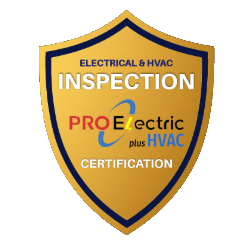When your whole-house air conditioner breaks down, your home becomes warm during a hot weather season in Northern Virginia.
You must know the common causes of AC failures to stay cool and comfortable in your home.
Whether it’s due to some general maintenance or more involved mechanical troubles, knowing the top causes will help you catch it before it is too late and end up costing a lot of money in repairs.
We break down the top 50 causes of your whole-house AC failure so you can be equipped with all the necessary information to ensure your air conditioner runs year-round.
Here are 50 different ways your whole-house AC systems fail:
-
Dirty air filters
-
Refrigerant leaks
-
Faulty thermostat
-
Blocked condenser unit
-
Dirty condenser coils
-
Electrical issues
-
Tripped circuit breaker
-
Blown fuses
-
Faulty capacitors
-
Broken fan motor
-
Malfunctioning compressor
-
Clogged drain lines
-
Frozen evaporator coils
-
Poor insulation
-
Leaky ductwork
-
Oversized AC unit
-
Undersized AC unit
-
Dirty blower motor
-
Worn blower belts
-
Inadequate ventilation
-
Corroded wiring
-
Faulty relays
-
Damaged duct insulation
-
Improper installation
-
Aging system components
-
High humidity levels
-
Pest infestations
-
Incorrect thermostat settings
-
Power surges
-
Frozen condenser unit
-
Blocked air vents
-
Dirty air ducts
-
Faulty limit switches
-
Inverter issues
-
Improper refrigerant charge
-
Compressor overheating
-
Airflow restrictions
-
Damaged fan blades
-
Insufficient drainage
-
Control board failures
-
Thermostat wiring issues
-
Defective sensors
-
Heat exchanger problems
-
Voltage fluctuations
-
Poor maintenance practices
-
Improperly sealed windows
-
Excessive dust buildup
-
Inconsistent power supply
-
Software glitches
-
Lack of regular inspections
Whole-house air conditioning system failures can cause higher energy costs and discomfort.
Regular upkeep and attention to issues can keep your AC operating reliably and smoothly.



